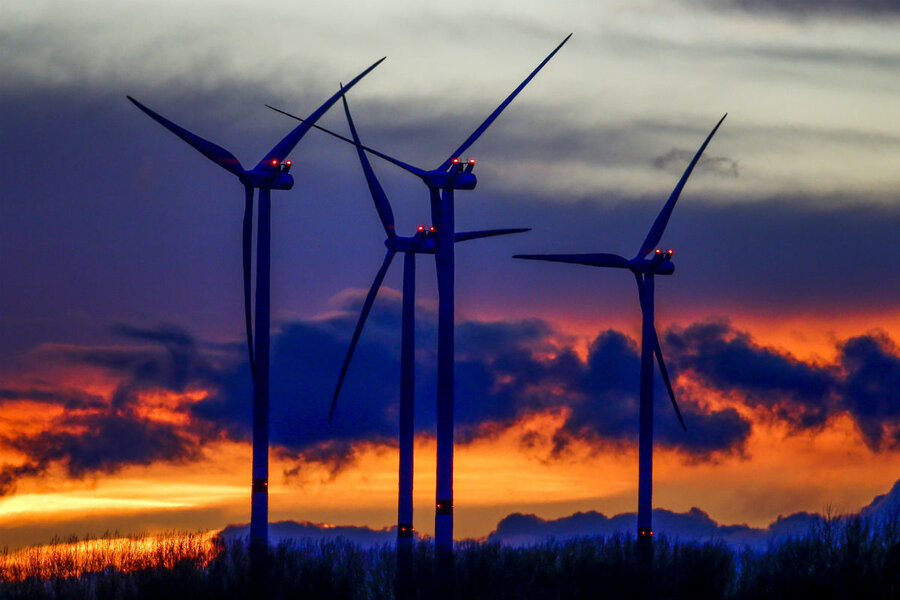Why a red state is the No. 1 wind energy producer in America
Loading...
Wind capacity in America has swung sharply upward since 2000, and the latest boost came this Wednesday: New York continued the wind bonanza with Gov. Andrew Cuomo’s announcement that Long Island will soon host America’s biggest offshore wind farm. But despite the governor’s ambitious plans for the blue state to get half of its energy from renewables by 2030, it still lags, at least in wind, far behind America’s unexpected leader.
Everything’s bigger in Texas. And that includes energy of all varieties.
In 2013, the Lone Star state produced 36 million megawatt hours, more than twice that of runner up Iowa, although Iowans can still brag that wind satisfies almost a third of their state’s energy needs. California came in third and New York didn’t even make the top twelve.
Part of the answer is that Texas is a big producer of energy in general: number one overall in 2014, pumping out a whopping one fifth of the country’s energy. The state is the birthplace of fracking, the controversial but innovative drilling technique that transformed America’s energy industry: for all its possible environmental effects, fracking has created hundreds of thousands of jobs, and trillions of dollars of wealth, according to Gary Sernovitz, author of fracking history “The Green And The Black.”
But that’s not the whole story. Even in the midst of the fracking revolution, then-Gov. Rick Perry signed on for a goal of generating 10,000 megawatts of renewable energy by 2025, according to the Wall Street Journal, stretching a previous target of 2,000 megawatts set by George W. Bush as part of a 1999 deregulation of the power market. In April of last year, the state was already making 19,000.
For some proponents of renewables, their benefits have little to do with the environment, but are green all the same. As 2017 begins, Texas’s Georgetown is set to become one of the first cities in the country to ditch fossil fuels entirely. But as then-interim city manager Jim Briggs, the engineer of the switch, told The Guardian in 2015, “We didn’t do this to save the world – we did this to get a competitive rate and reduce the risk for our consumers.”
Some fear the fluctuations in the price of oil more than they do the variability of the wind and sun, but it seems that political leanings in the largely conservative town don’t enter the equation. “[Texas] wants to have a diversity of resources because no one knows what gas prices will be in the future,” Joel Cohn of CohnReznick, an accounting tax advisory in New York that advises on renewable projects, told the Wall Street Journal this summer.
A survey by the Pew Research Center found that while opinions on fracking, coal mining, and offshore drilling fall strongly along party lines, expanding solar and wind power enjoys at least 75 percent support, even among self-identified conservatives. Global warming is a contentious issue, but it seems more people can agree on reforms framed as issues of consumer choice and job creation, key features of Texas's energy market.
Bush’s 1999 deregulation paved the way for the smorgasbord of energy plans Texans can choose from today, with as many as 107 currently offered in Houston. For example, customers of popular provider Reliant can choose between paying 5.9 cents per kilowatt-hour for a mostly fossil fuel-based plan or 7.1 for one that’s all-green, according to the Wall Street Journal.
Texas also invested heavily in energy infrastructure, connecting the windy and sunny western panhandle with cities with a higher demand. A renewable-reliant energy grid has to be flexible enough to make hay while the sun shines, as the saying goes, and move it where it’s needed.
However, clouds are on the horizon. One reason renewables can compete with fossil fuels as well as they do is federal subsidies, which are scheduled to expire soon. Such tax subsidies are one of the reasons Georgetown chose to go with solar over natural gas as part of its new energy package. Critics argue that the lack of a level playing field could cause some big plants to close early, before renewables have matured enough to take their place producing at the same price.
Supporters point out that the new technologies have taken great strides economically, with solar costs down 48 percent since 2010, as the Wall Street Journal reports.
While energy is often framed as a partisan issue, what balance Texas will strike between fossil fuels and renewables could ultimately be settled by the economic tussle between buyers and sellers.
As Austin resident Jon Klopf said of the Georgetown deal to The Guardian, "They were just looking out for the cheapest deal. That's just business."






